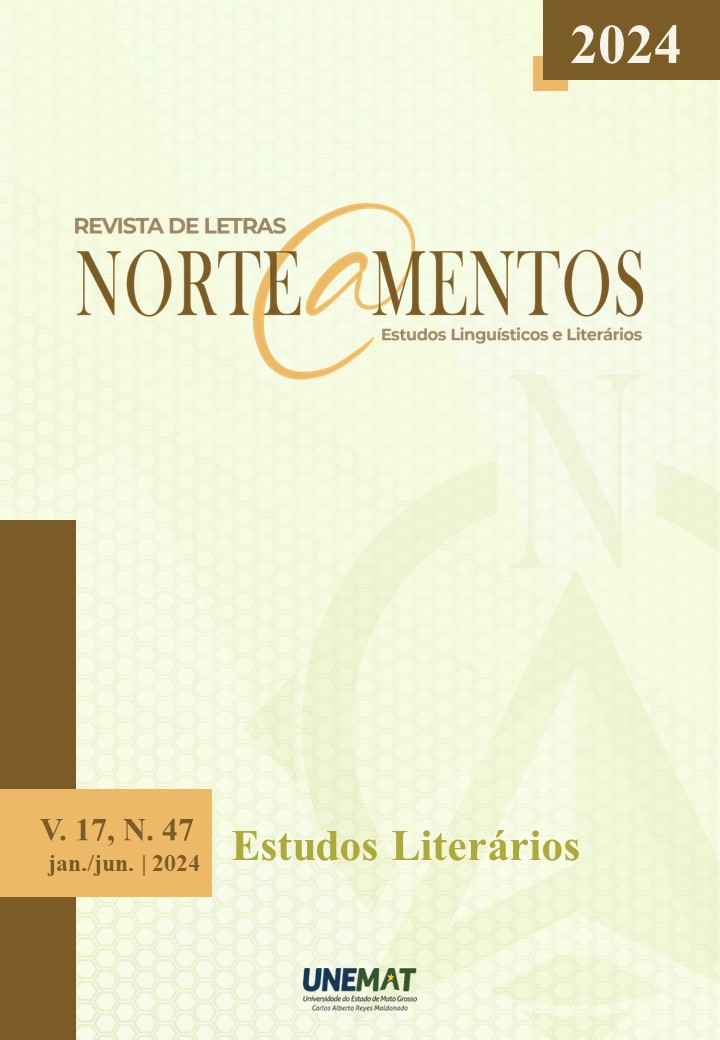A REPRESENTAÇÃO DA MULHER NEGRA EM A TRAVESSIA DOS SEMPRE VIVOS, DE TEREZA ALBUES
Palavras-chave:
Teodora, mulher negra, ex-escravizada, interseccionalidadeResumo
O presente artigo tem como objetivo evidenciar a representação da mulher negra na obra A travessia dos sempre vivos da escritora mato-grossense Tereza Albues. Apesar de Teodora não ser a protagonista do terceiro romance de Albues, essa mulher, negra, ex-escravizada e pobre tem um papel relevante na narrativa, posto que desde o início da história, a mulher de João Pedro se mostra ser personagem importante para o desenvolver do enredo. Dessa forma, para contemplar os propósitos delineados neste trabalho, usar-se-á como aporte teórico, textos que compõem a fortuna crítica de decolonialidade Fanon (2008), do feminismo negro e da interseccionalidade Crenshaw (2002), Dalcastagnè (2008) e Lugones (2014).
Downloads
Referências
ALBUES, Tereza. A travessia dos sempre vivos. Cuiabá: Entrelinhas, 2019.
ASSMANN, Aleida. Espaços da recordação: formas e transformações da memória cultural. Tradução de Antonio de Paulo Soethe. São Paulo: Unicamp, 2011
COELHO, Nely Novaes. Dicionário crítico de escritoras brasileiras (1711- 2001). São Paulo: Escrituras Editora, 2002.
CRENSHAW, K. Documento para o encontro de especialistas em aspectos da
discriminação racial relativos ao gênero. Revista Estudos Feministas, Florianópolis, v. 1, n. 1, p. 171-189, 2002.
DALCASTAGNÈ, Regina. Quando o preconceito se faz silêncio: relações raciais na literatura brasileira. Revista Niterói, nº 24, p. 203-219, 1. sem. 2008.
FANON, Frantz. Pele negra máscaras brancas. Tradução de Renato da Silveira. Salvador: EDUFBA, 2008.
FIGUEIREDO, Isabela. Caderno de memórias coloniais. São Paulo: Todavia, 2018.
LUGONES, María. Radical Multiculturalism and Women of Color Feminism. Journal for Cultural and Religions Theory, v. 13, p. 68-80, 2014.
NADAF, Yasmin Jamil. Presença de mulher: ensaios. Rio de Janeiro: Lidador, 2004.
SCHØLLHAMMER, Karl Erik. Ficção brasileira contemporânea. Rio de Janeiro: Civilização Brasileira: 2009.
Downloads
Publicado
Edição
Seção
Licença
Copyright (c) 2024 Revista de Letras Norte@mentos

Este trabalho está licenciado sob uma licença Creative Commons Attribution 4.0 International License.
Os direitos autorais dos artigos publicados pertencem à Revista de Letras Norte@mentos e seguem o padrão Creative Commons (CC Atribution 4.0), que permite o remixe, a adaptação e criação de obras derivadas do original, mesmo para fins comerciais

